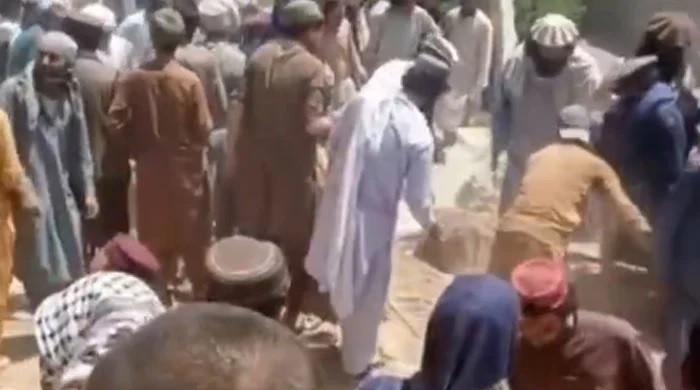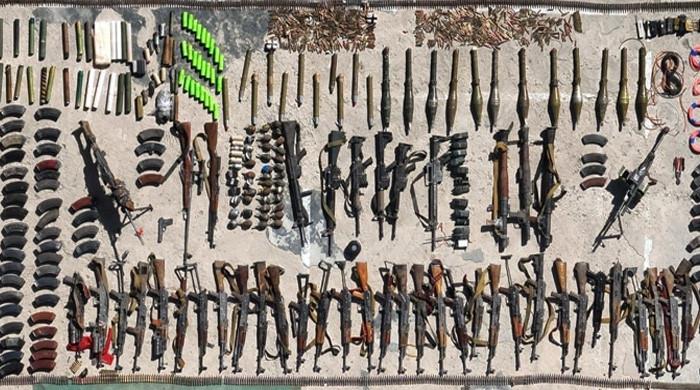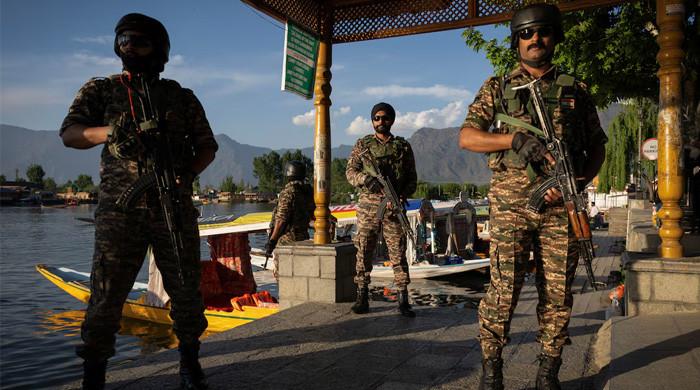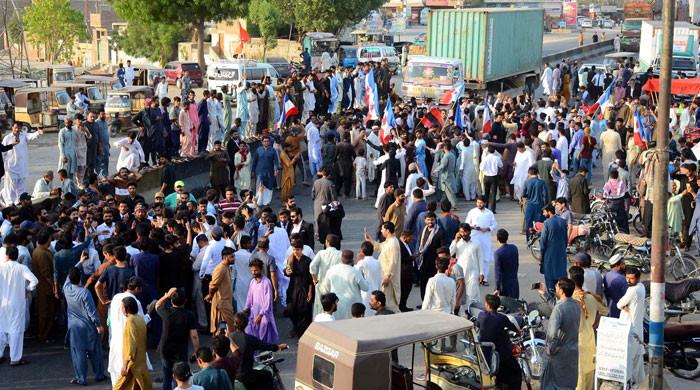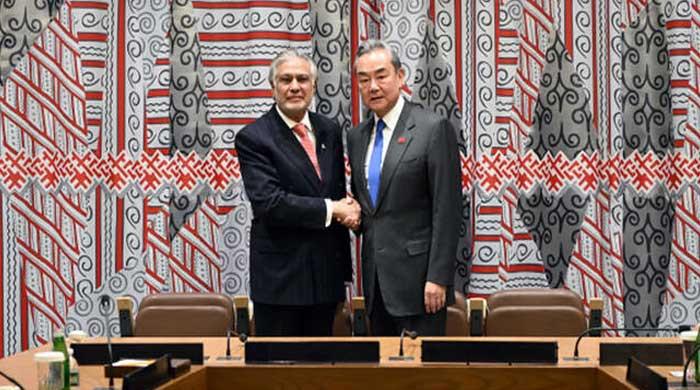Kenyan report finds Arshad Sharif killed in mistaken identity chase
Report says Arshad Sharif was killed by four members of GSU in a random shootout because his driver did not stop at a roadblock
March 28, 2023
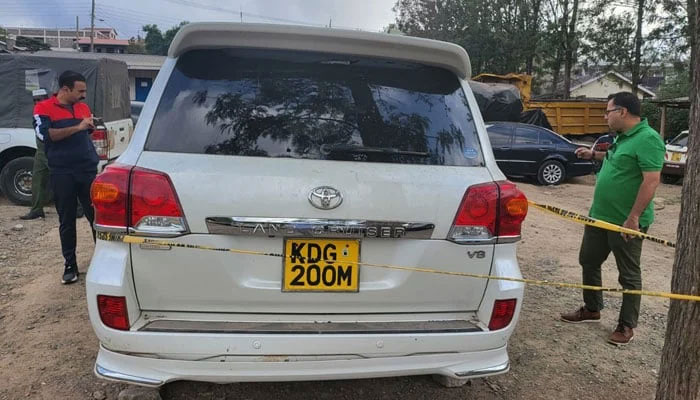
- Report sticks to the original Kenyan police version on the killing.
- Report recommends prosecution of two of four GSU officers involved in killing.
- Report also states that Arshad Sharif was not tortured before or after the murder.
An investigation by the Kenya government authorities maintains that Pakistani journalist Arshad Sharif’s killing was a case of “mistaken identity” and there was no murder planning involved, according to the embargoed official Kenyan government investigation report.
The Kenyan govt report says that Arshad Sharif was killed by four members of the para-military General Service Unit (GSU) in a random shootout because his driver Khurram Ahmed didn’t stop at the roadblock, according to a trusted Kenyan government source who has read the report in full and shared its contents with Geo News.
The journalist was on his way from Waqar Ahmed’s hilly and remote AmmoDump shooting range towards Central Nairobi where he secretly lived in Waqar Ahmed’s penthouse.
The Kenyan report sticks to the original police version that the four guards were looking out for a runaway vehicle and ended up firing bullets at Arshad Sharif’s car when Khurram Ahmed jumped the roadblocks erected by the police. A reliable source quoting the report says, that the four GSU officers who fired bullets at Arshad Sharif’s vehicle were not drunk.
However, the detailed official report rejects the original version of the police. It was initially reported by the GSU officers that shots were fired from inside Arshad’s Landcruiser towards the police officers and the police fired in retaliation. The report — carrying fresh details and yet to be made public — says no shots were fired from inside Arshad Sharif’s vehicle. It confirms that one of the four police officers was actually injured in the hand but he was hit by a bullet fired by a fellow police officer who was shooting in the direction of Arshad’s vehicle on the fateful night of October 23, 2022.
The official report has recommended to the prosecution that two of the four GSU officers were involved in using excessive force by opening fire recklessly and therefore should be prosecuted. According to Kenya’s Penal Code, anyone involved in the excessive use of force could be sentenced to life. It’s understood that the recommendations have been passed to Kenya’s prosecution service but no decision has been made yet on the prosecution and charges. The official report also insists that Arshad Sharif was not tortured before or after the murder.
Arshad Sharif’s driver and companion was Waqar Ahmed’s brother Khurram Ahmed who was not hurt in the attack. He has said he drove Arshad Sharif, in critical condition while bleeding, to his brother’s organic farmhouse some 25 kilometres from the shooting spot. Immediately after his killing, the Kenya government announced to launch of an investigation and promised to make its findings public within days.
The chairperson of Kenya’s Independent Policing Oversight Authority (IPOA) has said that Arshad Sharif’s murder at the hands of Kenya’s police is being fully investigated to establish the facts surrounding the shooting and that “full and thorough investigation to establish the circumstances surrounding the shooting” will be determined soon. But neither the Kenyan govt nor the IPOA has released the results of their investigation in five months. The source said that the Kenya govt completed its investigation over two months ago but the report was not made public but it has been seen by a few senior functionaries of the Kenyan government.
The embargoed report agrees almost verbatim with the original police version which had denied any murder planning or being part of a conspiracy to murder — relying on the "mistaken identity" position from the start.
According to the police, Sharif was shot dead in a pure case of mistaken identity after businessman Douglas Wainaina Kamau who has his base in Nairobi reported that his vehicle, a Mercedes Benz Sprinter of registration number KDJ 700F had been stolen. Douglas had reported at Pangani Police Station that his vehicle was stolen on the evening of October 23. Three days before he made the report, Douglas had spent time with his son in Mombasa located in the coastal area of Kenya and they headed to Nairobi. It is while they were in Nairobi that Douglas said that he wanted to repair his vehicle as he also attended to other issues which made them agree to stay in the city for some time. On October 23, they went to visit family members. The son went to meet his wife Joy Gudi, who lives with his aunt, while the father went to meet his brothers and sister in Kijabe. According to the report by investigating officer corporal Godfrey Munene, Dancan later joined his father in Kijabe and they drove back to Nairobi together, Dancan being the driver.
“While at the Ngara area at around 6.30 pm, Wainaina sought to buy electric cables and he told his son to park the vehicle off the street and wait for him. He returned after ten minutes but could not see the son or the vehicle,” the police report says. Douglas tried to reach out to his son but he was not responding to phone calls which made him pick a motorbike and make rounds within the vicinity with the aim of trying to trace him.
“Douglas called Dancan again but the phone was not answered and he suspected that his son was carjacked and was with criminals. He reported a case of abduction/theft of motor vehicle vide police Occurrence Book no.70/23/10/2022 at 7.20 pm at Pangani Police Station,” reads the police report. It is then that Godfrey Munene the investigating officer went ahead and alerted the senior most officer at Magadi General Service Unit (GSU) training college in Kajiado County. It was then that junior officers were asked to stay alert and erect a roadblock so that they could stop the vehicle as it had been traced to the Olepolos area in Kajiado County.
As this was happening, Sharif was also planning to leave Amodump Kwenia where he had attended a party alongside US soldiers and after a while, he left with Khurram Ahmad in a Toyota Landcruiser registration number KDG 200M. Arshad Sharif had arrived at the camp the previous evening, went to bed early on the weekend night and took part in a shooting exercise at the range and spent early evening at the barbecue party. As they approached the roadblock which had been erected by the officers, they were waved down to stop but instead, Khurram drove over the roadblock which had been erected using stones. That is when the officers started shooting at the vehicle and a bullet hit Sharif killing him after a few minutes, according to the police.
Investigations were opened by the police through the Directorate of Criminal Investigations (DCI) and also the Independent Policing Oversight Authority (IPOA) but nearly five months later no one has been arrested or charged in relation to the death of the journalist. IPOA is usually taken along when carrying out such investigations but once complete, the officers involved in such killings are usually arrested and brought in court to answer to the charges. An official who spoke in confidence and works at IPOA said that “the files were handed over to the office of the Director of Public Prosecution and it was returned. Everything will be put to place as we seek justice.”
The Kenya govt report comes after a strong report by two Pakistani officers — Omar Shahid Hamid and Ather Waheed — concluded after their investigations in Kenya that Arshad Sharif was killed in a planned assassination plot in Kenya. The damning report named several characters who may have played their role in the killing plot and blamed the Kenyan police for a cover-up. Kenya’s human rights commission had also told Geo News it believed that the Kenya police were involved in the planned murder of Arshad Sharif whose family, friends and colleagues have also said the fleeing journalist was killed in a planned hit. The 49-year-old was living in exile after he fled Pakistan in August to avoid arrest in the wake of multiple cases, including sedition charges. Islamabad police have charged Pakistani businessmen living in Kenya — Waqar and Khurram who had hosted Sharif in the African country — with involvement in his killing.
Through their lawyer, Waqar Ahmed and Khurram Ahmed have denied any involvement in the murder. Their lawyer has said that Arshad’s killing was a case of mistaken identity and no foul play was involved. Waqar Ahmed has said that the Chief Executive Officer of Karachi Kings Tariq Wasi had asked him to sponsor Arshad Sharif’s visit to Kenya, which he arranged out of courtesy.
The report by Pakistani officers, on 592 pages, says the Kenyan police issued contradictory statements following the killing. Kenyan and Pakistani media have highlighted several inconsistencies in the original police version of events. Even Kenya’s embargoed official report blames the police for making false statements following Arshad’s killing. Arshad Sharif’s case in Pakistan’s Supreme Court is now represented by Justice (retired) Shaukat Siddiqui, the former Islamabad High Court judge.
Originally published in The News





